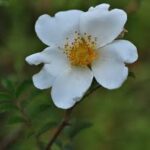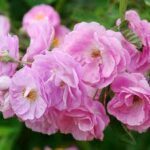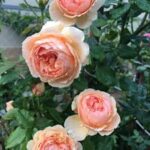
Wildflowers, with their vibrant blooms and ecological significance, are integral components of ecosystems, including primary forests and wetlands. Understanding the relationship between wildflowers and the management and conservation of these critical habitats is essential for preserving biodiversity and ecosystem integrity. In this article, we explore the link between wildflowers and research focused on the management and conservation of primary forests and wetlands.
**1. Biodiversity Hotspots:**
Primary forests and wetlands are biodiversity hotspots, harboring a wide array of plant and animal species, many of which depend on wildflowers for food, shelter, and reproduction. Wildflowers play a vital role in supporting pollinators, such as bees and butterflies, which are essential for maintaining ecosystem health and facilitating plant reproduction. Research into the distribution and abundance of wildflowers in these habitats provides valuable insights into overall biodiversity patterns and ecosystem dynamics.
**2. Indicator Species and Habitat Quality:**
Wildflowers often serve as indicator species, providing valuable information about habitat quality and ecological conditions. Changes in the abundance and diversity of wildflower populations can signal shifts in environmental factors such as soil fertility, moisture levels, and disturbance regimes. Monitoring wildflower communities in primary forests and wetlands enables researchers to assess the health of ecosystems and identify areas in need of conservation and restoration efforts.
**3. Ecological Functions and Ecosystem Services:**
Wildflowers contribute to essential ecological functions and ecosystem services in primary forests and wetlands. Their intricate root systems help stabilize soil, prevent erosion, and retain moisture, which are critical for maintaining hydrological cycles and water quality in wetland ecosystems. Additionally, wildflowers provide food and habitat for a wide range of wildlife, including insects, birds, and small mammals, contributing to biodiversity conservation and ecosystem resilience.
**4. Habitat Restoration and Enhancement:**
In degraded or disturbed primary forests and wetlands, reintroducing native wildflowers can aid in habitat restoration and enhancement efforts. Restoring wildflower populations helps recreate natural plant communities, which are better adapted to local environmental conditions and provide essential resources for native fauna. Research on the selection of appropriate wildflower species, propagation methods, and establishment techniques is crucial for the success of restoration projects.
**5. Climate Change Resilience:**
As climate change alters environmental conditions, understanding the role of wildflowers in enhancing ecosystem resilience becomes increasingly important. Certain wildflower species may exhibit resilience to climate stressors such as drought, heatwaves, or invasive species, making them valuable assets for maintaining ecosystem functions in the face of changing climate regimes. Research on the adaptive capacity of wildflower populations can inform climate-smart conservation strategies for primary forests and wetlands.
**6. Cultural and Ethnobotanical Significance:**
Wildflowers hold cultural and ethnobotanical significance for indigenous communities and local cultures worldwide. Traditional knowledge of wildflower uses for food, medicine, and ceremonial purposes enriches our understanding of their ecological importance and strengthens connections between people and nature. Integrating indigenous perspectives into research on wildflower management and conservation promotes cultural diversity and fosters collaborative approaches to ecosystem stewardship.
**7. Policy and Management Implications:**
Research on wildflowers in primary forests and wetlands has important policy and management implications for conservation planning and land-use decision-making. Incorporating data on wildflower distribution, abundance, and ecological functions into protected area management plans and landscape-level conservation strategies enhances the effectiveness of biodiversity conservation efforts. Moreover, promoting public awareness of the ecological value of wildflowers can garner support for policies and initiatives aimed at their protection and restoration.
In conclusion, the intricate relationship between wildflowers and research on the management and conservation of primary forests and wetlands underscores the importance of preserving these critical habitats. By advancing our understanding of wildflower ecology, distribution, and conservation needs, we can develop science-based strategies to safeguard biodiversity, enhance ecosystem resilience, and promote sustainable land stewardship for future generations.










